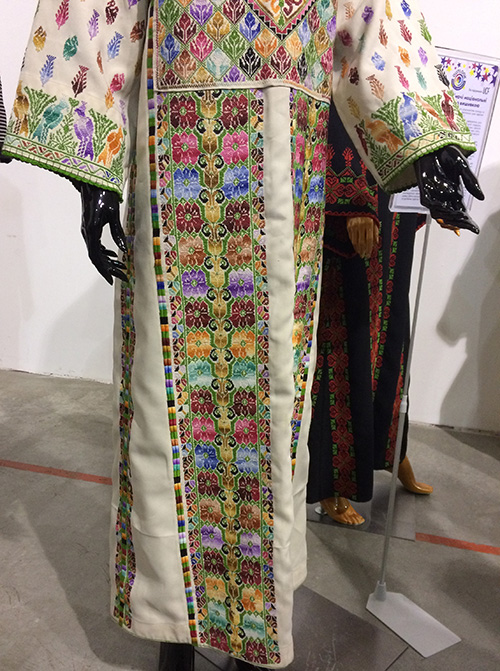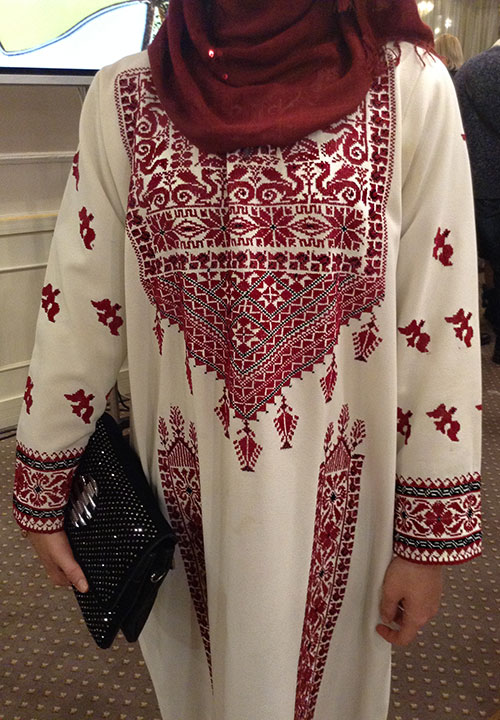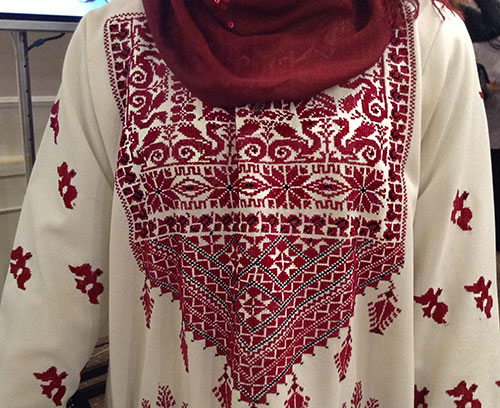 The craft of embroidery in Palestine underwent big changes in the mid-20th century. Why? What geopolitical events were so serious that they influenced the traditional craft that used to be established and changeless for centuries before. Let’s find out. Also, let’s see how the Palestinian needlework has changed and what it looks like today. It’s great that young women in this country and in the diaspora abroad are still interested in traditional embroidery and other crafts. Yes, they alter the patterns and color palette, but they don’t give up doing it. That is how folk art survives in the 21st century.
The craft of embroidery in Palestine underwent big changes in the mid-20th century. Why? What geopolitical events were so serious that they influenced the traditional craft that used to be established and changeless for centuries before. Let’s find out. Also, let’s see how the Palestinian needlework has changed and what it looks like today. It’s great that young women in this country and in the diaspora abroad are still interested in traditional embroidery and other crafts. Yes, they alter the patterns and color palette, but they don’t give up doing it. That is how folk art survives in the 21st century.
Why this date – 1948? The thing is, in 1947-1949, a war between Palestine and Israel happened. This is when the country of Israel separated from the territory of Palestine. The Arab-Israeli conflict is still continuing today. We won’t support here any one side but we can definitely say that this war was a breaking point for both these countries and had a large impact on their lifestyle and culture.
Particularly for Palestine, after 1948, the long-ago established traditions in folk crafts (embroidery among them) changed somewhat. The country became more open to Western tendencies and culture, including the clothing traditions. The embroidery patterns stopped representing a certain village or area but turned into a unified representation of Palestine as a whole.


In earlier periods, Palestinian women didn’t read or write, so they used embroidery as the means to tell their stories and pass them to their offspring. In modern Palestine, this tradition went into oblivion and needlework stopped being so representative. It became more of a decoration method, a way to honor the history and tradition, and the means of resistance. For example, small depictions of the Palestinian flag appeared embroidered on clothing because Israel at some point banned the usage of their flag by Palestinians.
There are sort of 3 categories of Palestinian embroidery motifs: patterns that depict amulets and protective symbols, designs with sentimental meaning (we can see them on so-called “Gardens dress”), and patterns that perform educational lessons for the next generation (women transfer their knowledge about dangerous animals, harvesting methods, and any other info to children).


One of the motifs that came into Palestinian needlework tradition after 1948 is the Family Tree. It quickly became one of the favorite designs because it symbolized a strong family and a strong country in a wider meaning.
The flowers in the local embroidery mean beauty and celebration. They also symbolize a connection to the land. And they are a rather popular motif in Palestine, along with animals, geometric designs, etc.
If to talk about the colors in Palestinian clothing and embroidery, the white background fabric is for summer and black for winter. The needlework can be similar on both white and black clothes but they would be worn during the corresponding season. As to the stitching, the red color of embroidery means beauty and life, red reminds us of blood, which is our life force. A lot of black embroidery can symbolize mourning, such clothes are sometimes worn for protests or different sad events.

By the way, you can usually tell the purpose of a thob (traditional female robe in Palestine) by the amount and peculiarities of embroidery on it. If it’s an everyday thob, there are few needlework patterns, and the more festive and exclusive the dress, the more embroidery it has. The most ornate dresses often are produced by a group of artisans because they are extremely labor-intensive and one person would need years to finish this piece.
Today, the Palestinian embroidery craft continues to develop and change. New motifs and symbols become popular – like lettering, which isn’t traditional for Palestine. But the authentic patterns, colors, and motifs are still present, modern artisans continue to use them, sometimes changing their appearance to make them more up-to-date and sometimes using them as they originally were.
If you want to get more knowledge about Palestinian traditional embroidery, there’s a nice book “Tatreez & Tea: Embroidery and Storytelling in the Palestinian Diaspora” by Wafa Ghnaim.


